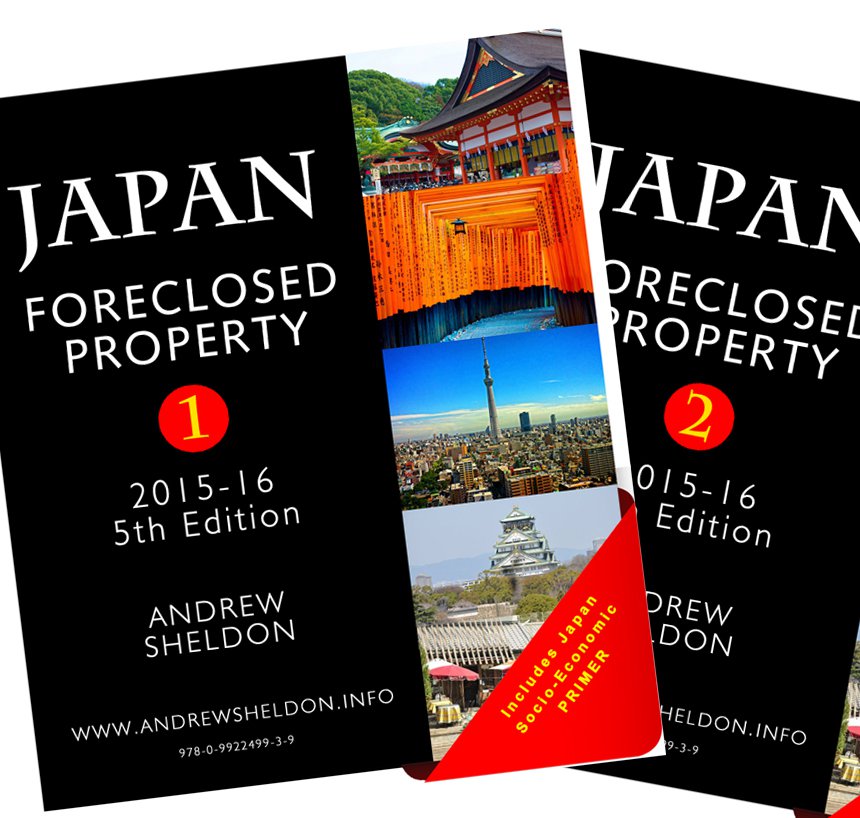Japan Foreclosed Property 2015-2016 - Buy this 5th edition report!
You can view foreclosed properties listed for as little as $US10,000 in Japan thanks to depopulation and a culture that is geared towards working for the state. I bought foreclosed properties in Japan and now I reveal all in our expanded 350+page report. The information you need to know, strategies to apply, where to get help, and the tools to use. We even help you avoid the tsunami and nuclear risks since I was a geologist/mining finance analyst in a past life. Check out the "feedback" in our blog for stories of success by customers of our previous reports.
Download Table of Contents here.
Tuesday, March 26, 2013
Japanese funds new Manila light rail lines
Posted by
Andrew Sheldon
at
7:03 PM
0
comments
![]()
![]()
Labels: Philippines Growth Zones, Railways, Transport
Bohol development underwritten by Japanese
Posted by
Andrew Sheldon
at
6:39 PM
0
comments
![]()
![]()
Labels: Japan, Opportunities, Philippines Property, resorts
Tuesday, March 5, 2013
When to retire in the Philippines?
Many expatriate Filipinos living in the United States are inclined to retire in the Philippines. There are of course many reasons to do so, and not to do so. Among the reasons are:
1. Proximity to old school friends
2. Greater value for their savings
3. Greater opportunity to work in non-profits or opportunity for their children
The reasons not to are perhaps:
1. Nicer natural environment in the USA
2. Greater job satisfaction
3. Suffering is everywhere - you don't need to go to the Philippines
4. I'm no longer Filipino - I'm a balikbayan that no longer relates to homeland values
5. My savings are adequate such that I don't need to
These are different perspectives, and the reality is that one can choose both. The reality is that its never been easier to invest abroad, or to travel abroad. There are greater opportunities in property in the Philippines, and that is where most people make money - in property. this is becuase:
1. The Philippine population rate is growing 2% per annum - maybe America is the same given its Mexican influx - offsetting natural birth rate sluggishness
2. The rapid rise in incomes in the Philippines - whilst unskilled wage rates in the west flounder, and corresponding welfare/tax imposts rise, and govts screw up with inadequate provisions for this problem
3. The rapid rates of urbanisation - seeing provincial unemployed flock to the cities
4. The tightening land use restrictions - surely the 1991 Land Code will take effect sometime???
These are the trends which cannot be ignore, irrespective of any blow-off by excessive land prices. The rise in the PHP has been a phenomenon since 2005 - when it was P54. Today its close to support at P40. The question is whether this support for the USD is going to hold. I suspect it will. You don't have to believe me. You can watch and wait for a reversal.
The implication of a reversal, and it may consolidate for a time, is that it becomes more appealing to move any savings from the US to the Philippines to pay off interest-bearing debts. Buying property in the Philippines is a decision which depends on local fundamentals, which for the reasons mentioned, are good. Also yields on most property are very good given the added capital appreciation, and trend. Property will eventually become overpriced.
Andrew Sheldon NZ Property Guide Philippine Real Estate Guide Foreclosed Japan Guide Applied Critical Thinking, Strategy, Integrity Investments SheldonThinks
Posted by
Andrew Sheldon
at
3:28 PM
0
comments
![]()
![]()
Labels: Balikbayan, forex rates, Fundamentals, Philippines Property, Retirees









